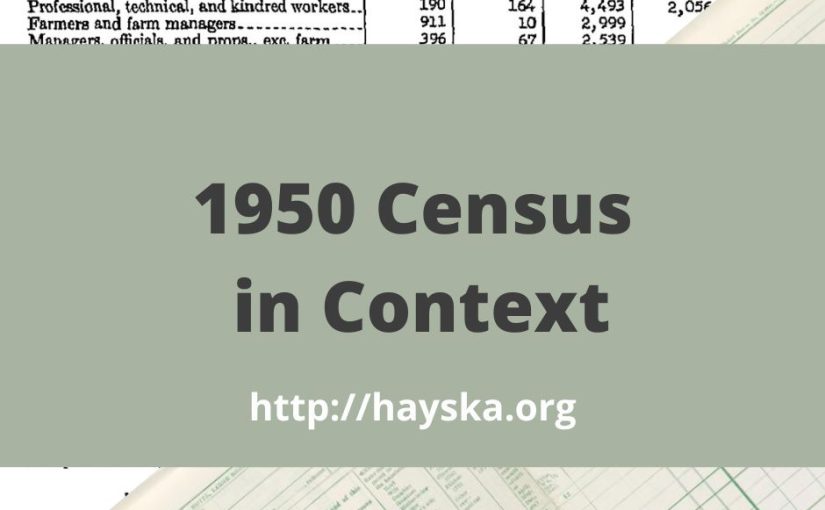When you view a census report for a household, the ages and relationships are interesting in themselves and can help break open a brick wall. Other information on the population schedule and farm schedules can offer context to answer other research questions.
The U.S. Census Bureau summarized the 1950 population data into state profiles. (1) Some of tables summarized information by county and others by urban locations. A few DuPage locations are summarized on Table 4, pp 13-9 to 13-11: Aurora, Downers Grove, Elmhurst, and Wheaton.
In 1950, DuPage County comprised 331 square miles and 154,599. It’s population increased 49.4% from 1940, after increasing 12.5% between 1930 and 1940. DuPage was categorized as 76.1% urban versus rural [Table 5, Page 13-12]
Township, city, and village populations between 1950, 1940, and 1930 are compared. For example, Wheaton’s population was 7258 in 1930, 7389 in 1940, and 11638 in 1950.
The pdf is keyword searchable if you are looking for a specific location. DuPage is printed and searchable as “Du Page.”
In DuPage, the median age was 31.5, 6.7% people were over 65 years, .4% of the county’s was non-white, and the median school years completed were 12.1. 82.7% males were in the labor force, while only 26.9% of females were in the labor force. The median income was $4098. [Table 11, Page 13-57] Knowing this information, we understand where our ancestors fit with the community profile.
By looking at the summary by the country of birth [Table 42a, page 13-165], we can see that the 11390 DuPage county residents born outside the U.S. came from a variety of locations. The top five are:
1. Germany, 2589, 22.7%
2. Canada-Other, 994, 8.7%
3. England and Wales, 906, 8%
4. Sweden, 886, 7.8%
5. Czechoslovakia, 863, 7.6%
In DuPage, 81.2% of adult males were employed. [Table 43, Page 13-169] The top five occupation groups were:
1. Craftsmen, foremen, and kindred workers, 10,888, 24%
2. Professional, technical, and kindred workers, 7,171, 15.8%
3. Managers, officials, and props., exc. farm, 6,926, 15.2%
4. Operatives and kindred workers, 6,434, 14.2%
5. Clerical and kindred workers, 4,279, 9.4%
The top five industry groups were:
1. Manufacturing, 15,423, 34%
2. Construction, 4,114, 9%
3. Other retail trade, 3,761, 8.3%
4. Railroads and railway express service, 2,680, 5.9%
5. Finance, insurance, and real estate, 2,182, 4.8%
The following fictional case studies are used because we don’t have access to the data yet.
Case Study 1
Janet Wood, age 30, black, married, wife to head of household, clerk in a bank.
She is very close to the median age of 31.5, She is 1 of 19.5% of women who were employed, 39.8% of women employed as Clerical and kindred workers, and 7.9% employed in the Finance, insurance, and real estate industry. Clerical occupations are the one group where women were employed at a higher rate than men.
Case Study 2
John Schmidt, age 75, white, married, retired, born in Germany.
He is among the 1.8% of DuPage aged 75 to 84, 1.5% of DuPage age 65 and over and not listed in the labor force, and the 22.7% born in Germany.
Sources
1950 Census of Population: Volume 2. Characteristics of the Population,” digital images, United States Census Bureau (https://www.census.gov/library/publications/1953/dec/population-vol-02.html : accessed 5 February 2022), Part 13: Illinois, Number of Inhabitants
#1950CensusCountdown #genealogy #FamilyHistory
